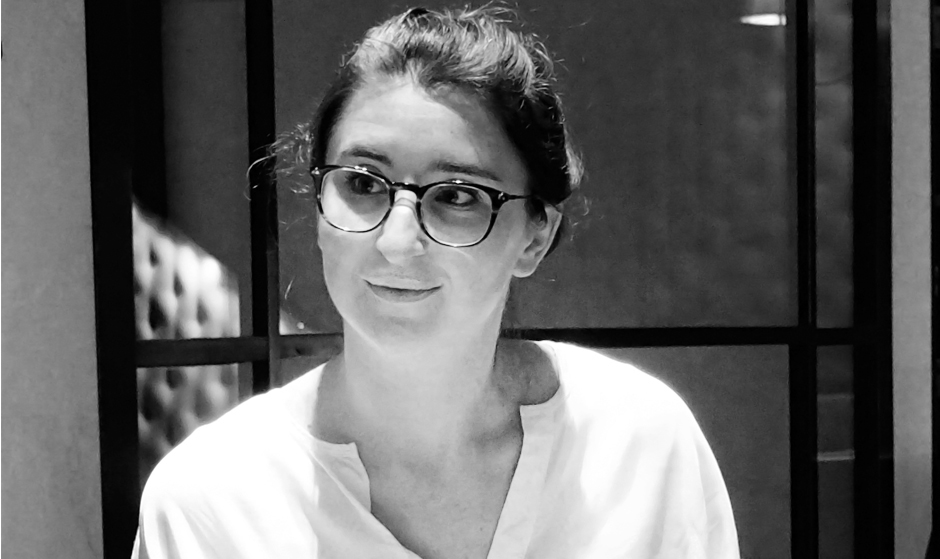
The Grosvenor House has a long history and we worked a lot with that. The Hotel used to have a lot of parties and burlesque shows and we thought those were very interesting events to bring into a hotel. Also, the proximity to Hyde Park was really important because we were asked to open up the hotel and link it from both entries so there’s a direct path towards park from the lobby so it was very important to bring those two worlds together.
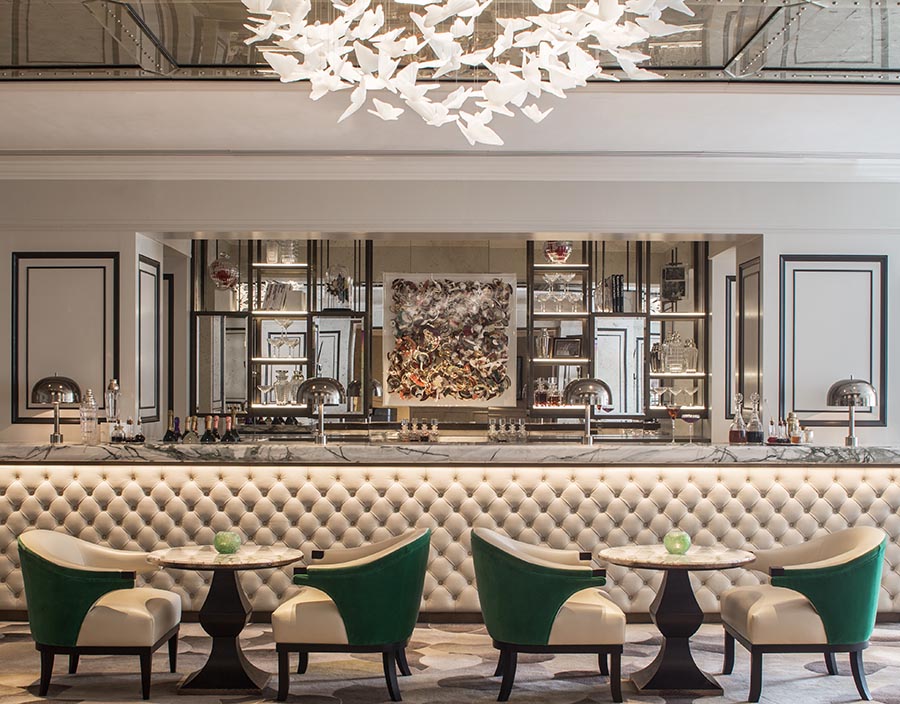
It is definitely a challenge. I think trying to keep the space cosy and intimate while being very open is quite difficult and a lot of that is about layering – accessorising and styling properly, creating seating groups that give people a feeling of intimacy within a big space. It’s also connected to lighting and creating an atmosphere in the space that makes you feel comfortable despite its size.
I think the space is used by different groups of people at different times of the day. A lot of people come here to have work meetings which can be quite personal, so obviously they don’t want everybody else to hear what they’re saying. There is also the evening setting which is quite different again.
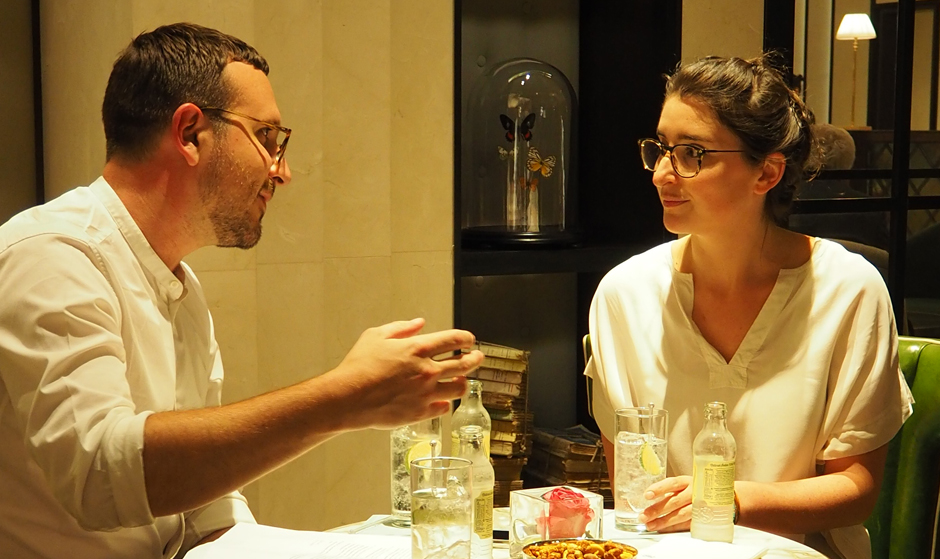
Mark Cox and Severine Lammoglia at The Grosvenor House Hotel
The Grosvenor House is quite different to other Marriott properties because of its history. We took the individual hotel into account which drove the design (more than it being a Marriott). Also, it is important to realise that the Marriott hotel group has changed a lot over the recent years – they no longer have one colour scheme that you need to follow, they are looking to give their projects a sense of place which means they all vary in scheme. Therefore Marriott as a brand wasn’t our main challenge - Grosvenor House with all its history and its huge reputation in London was our focus.
There’s a few actually – I love the fireplace, there’s a beautiful height to it that you don’t see in every hotel, it opens up the space in the lobby through to what’s happening behind it and I think it has quite an important presence in the space. I also like the Chandelier which came later on as an addition. I think it’s a celebration in the space, it’s really airy and light and it brings colour into the space and it’s a really nice addition to the lobby. I also have a soft spot for the white peacock.
Cast resin is a product that I haven’t used before. It was really interesting that you introduced me to this option. There is, obviously, the aesthetical aspect but there’s also the more practical aspect that we need to take into consideration. Your suggestion allowed the table to be very light. At first glance, you wouldn’t see the difference so I think it was a great suggestion and I should, actually, talk about it to the team so they know that this is an option for other projects.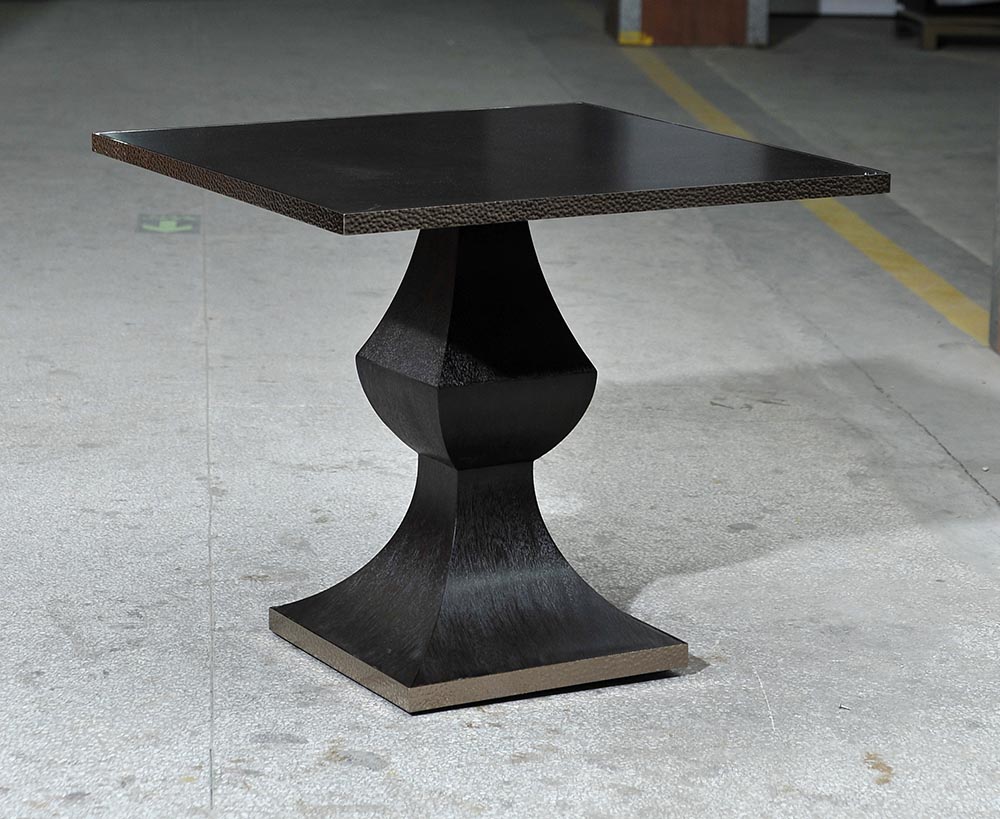
We have heard of PVD because we use it a lot on sanitary ware. Metal is something that we use more and more, both for structure and detailing. It is usually in high traffic areas that will get quite beaten up so yes, definitely need something that is resistant and look at it now, it is! I mean it’s perfect it does serve that purpose.
Working with Decca is great because you always issue a full set of samples and we know that your products are good and take into account durability, which is not always the case on some projects that we’ve worked on, unfortunately. Durability is something that we're trying to consider more and more with Muza Lab, by having more control from the beginning to the end of the design and implementation process.
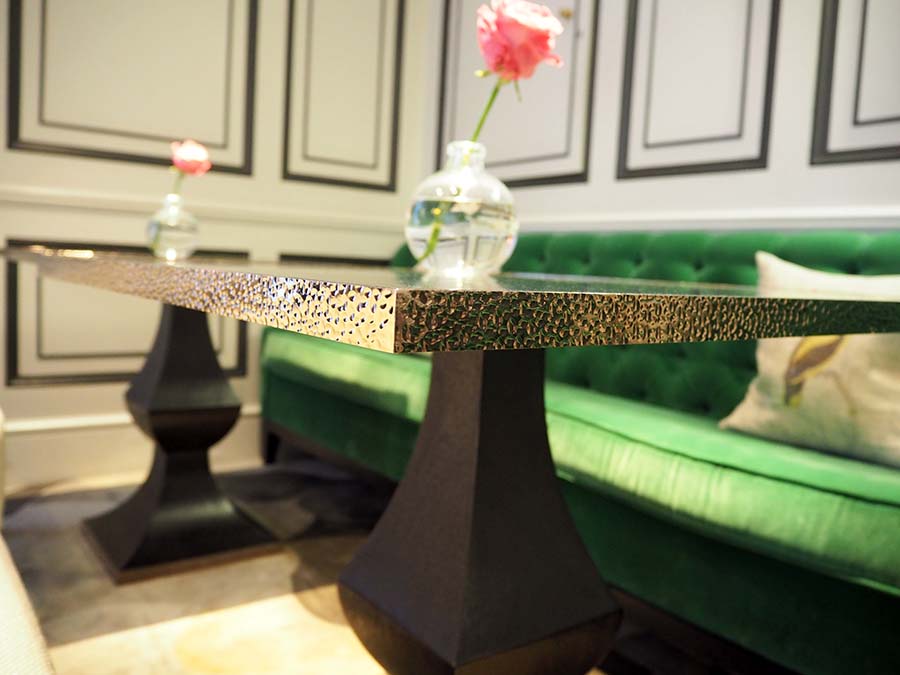
Decca's bespoke tables in Grosvenor House Hotel
We tend to work with several stone suppliers; we’ve worked with Marmor before working with them on the Grosvenor House project. It’s quite interesting that you talk about this finish from the aesthetic point of view because it was supposed to be used for more practical reasons - to seal its surface properly. We've tested it with lemon and coke and it resists everything for several hours. Of course, the fact that the product looks better in the end is a plus.
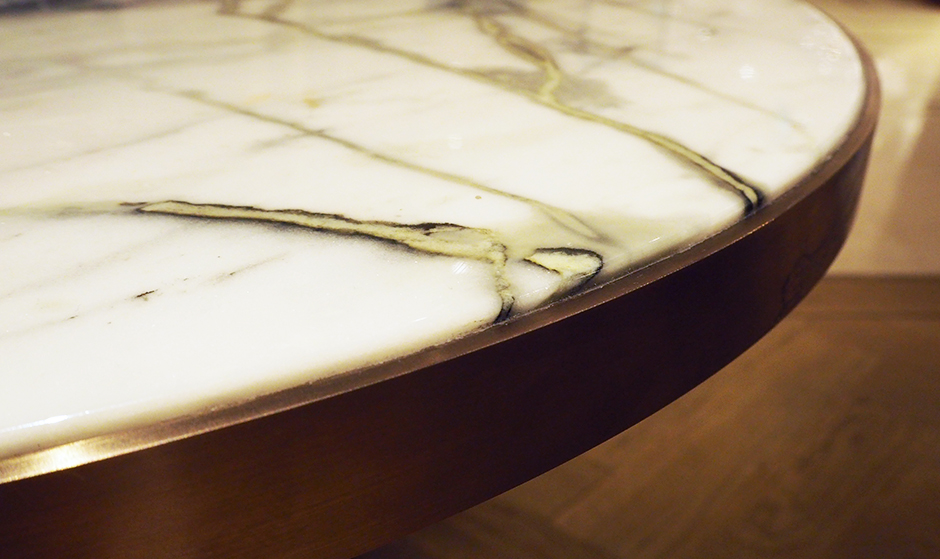
Detail of a bespoke marble topped table at Grosvenor House Hotel
This was the first time I’ve worked with JPS. I think the purchasing is a huge part of any project to make sure that they're sourcing the right items locally. We obviously try to do that ourselves but it's always nice to have someone who knows the market and can get things locally, ensuring that the design is still there. We rely on the purchasing agents to help us achieve the design within the agreed budget, but also to make sure everything arrives on time. So there is a lot of coordination between us and the purchasing agents, it is a lot of team work and we rely on them a lot. It is the same way we rely on all our suppliers and everybody who's involved on any of our projects.
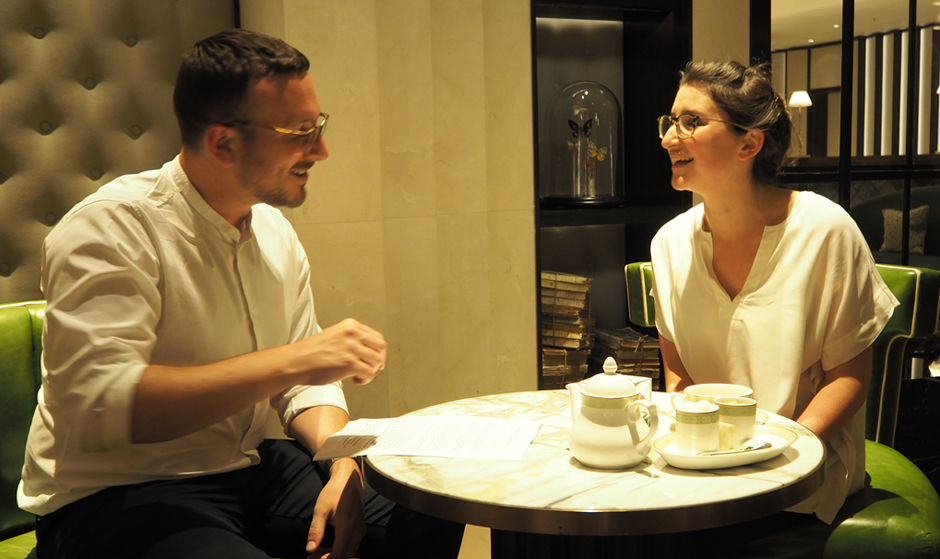
Mark Cox and Severine Lammoglia at The Grosvenor House Hotel
I worked for HBA for 4 years, they were really great people and an amazing team to work with. It was a very creative office and I think that's something that I'll take away for my career – that creative side of the office and the materials that they use.
Muza Lab is a smaller company. We wanted it to be smaller in order to be more hands on and be involved on every aspect of a project, while having a closer relationship with our clients. We want to work with them to build a brand, so we also work on their brand identity and then develop designs that best fit. There is also a lot of styling, so we really work on the project from the beginning to the end covering all aspects. Of course, we want to have the best team to work with us to achieve the best projects.
‘MUZA’ is derived from the Greek word for a MUSE – it forms part of the inspiration of how we work, we really want to tell a story with our projects. It is really important for us to do research about the place and the building, the cultural aspect of where the project is, that's kind of our inspiration. The ‘LAB’ bit is the kind of 'laboratory' side of things, which is more about experimenting in design, while still making sure we are precise enough to ensure it all works. It's the precision of it but at the same time the experimentation of it. That's how we work to create the best projects.
When Nathan and Inge [the founders of Muza Lab] asked me to join their team, it was a new adventure, building a new company, so for me, being an associate there is about helping them and being a core member of the team to build the Muza brand. We're only 6 months old so it's still developing and I think that's very interesting for me to be there from the beginning and work with them to create something different.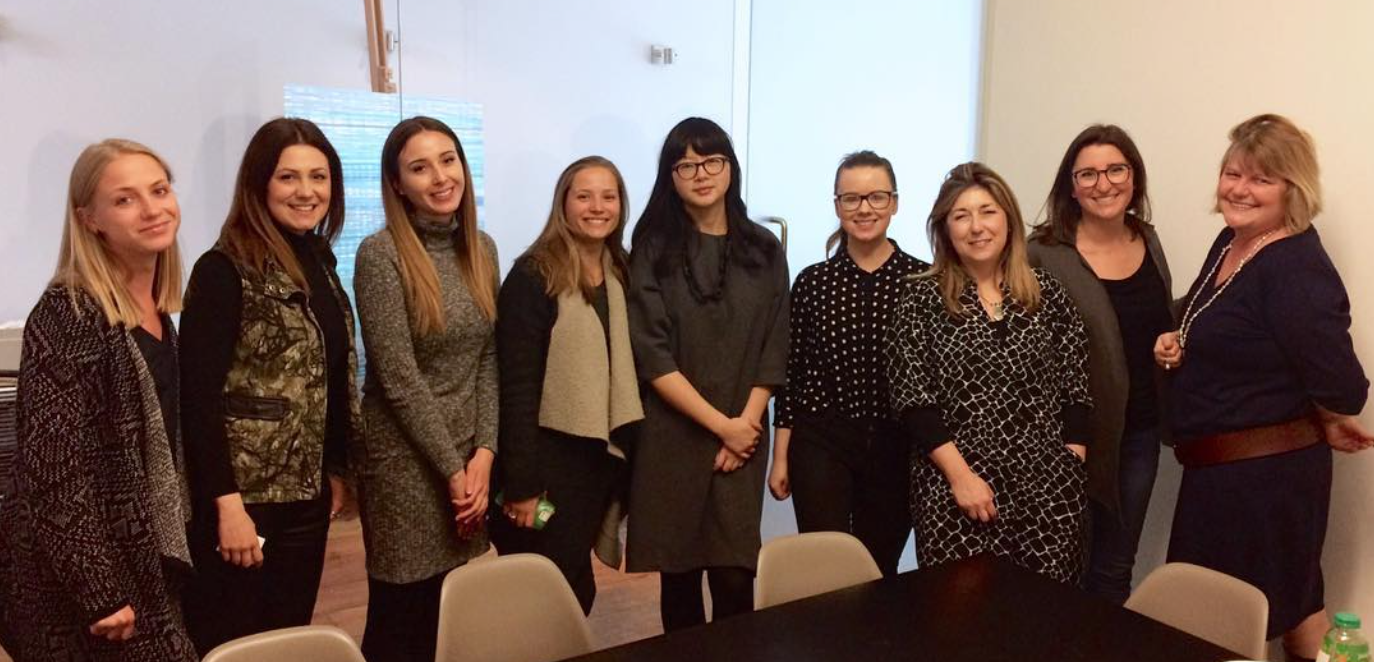
Decca's Director Gemma Allman with the team at Muza Lab
There's a few things. What's really interesting is that you come up to us with ideas, we don’t have to come and say oh we have this problem, as you can often foresee them. Not that there are problems but you come with solutions that might make the product even better. It's not only the aesthetic considerations, but also the functional and practical which are really good. Also, you have amazing shop drawings, which is not something we get from everybody. And you deliver on time. For us it's really important to work with suppliers we can rely on and in the end who make our life easier because we work with a lot of people on the various projects so it needs to flow smoothly, rather than slow us down so I think that's what you do in a very good way.

4 September 2017